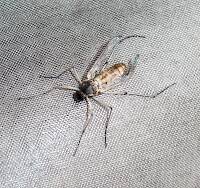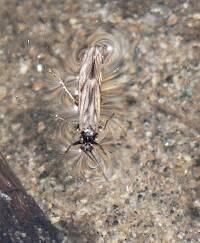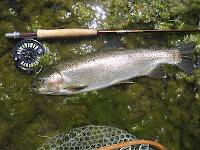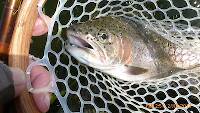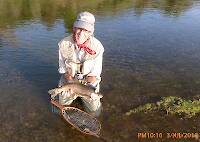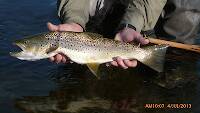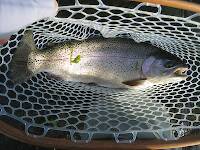
Blue-winged Olives
Baetis
Tiny Baetis mayflies are perhaps the most commonly encountered and imitated by anglers on all American trout streams due to their great abundance, widespread distribution, and trout-friendly emergence habits.
Featured on the forum

I caught this tiny larva without a case, but it seems to key pretty clearly to to Glossosomatidae. From there, the lack of sclerites on the mesonotum points to either Glossosoma or Anagapetus. Although it's difficult to see in a 2D image from the microscope, it's pretty clear in the live 3D view that the pronotum is only excised about 1/3 of its length to accommodate the forecoxa, not 2/3, which points to Glossosoma at Couplet 5 of the Key to Genera of Glossosomatidae Larvae.

Troutnut is a project started in 2003 by salmonid ecologist Jason "Troutnut" Neuswanger to help anglers and
fly tyers unabashedly embrace the entomological side of the sport. Learn more about Troutnut or
support the project for an enhanced experience here.
Snowsquatch has attached these 3 pictures to aid in identification. The message is below.
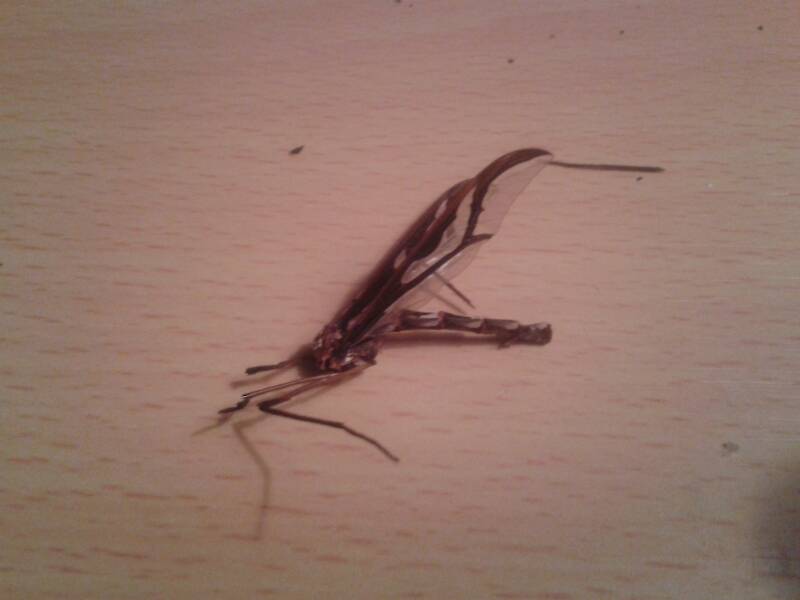
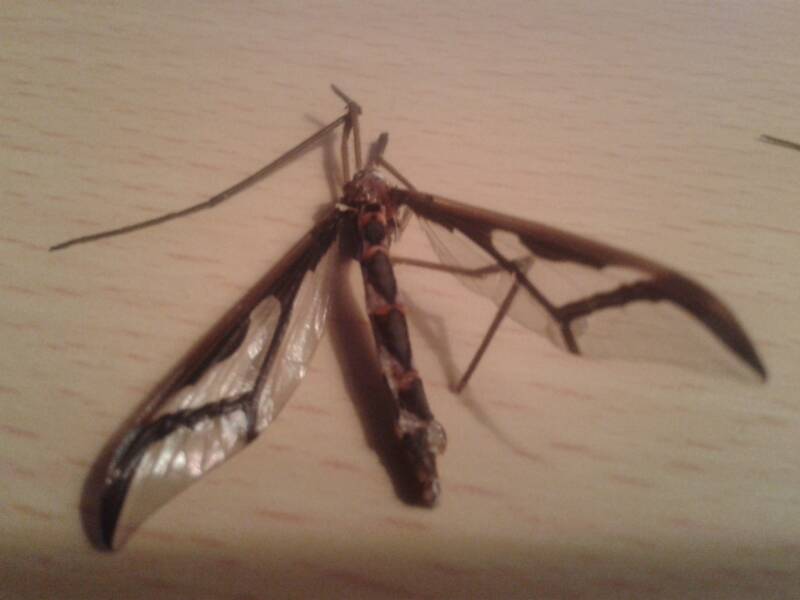
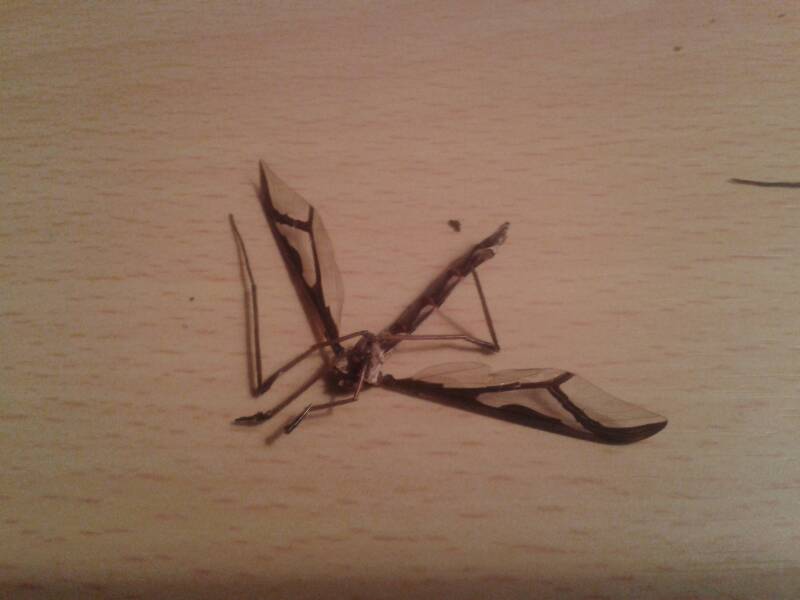
Snowsquatch on Aug 30, 2012August 30th, 2012, 8:25 pm EDT
I found this in the house last night could I have some help to identify it
"It's not the mountain we conquer, but ourselves"
Taxon on Aug 31, 2012August 31st, 2012, 12:51 am EDT
Hi Showsquatch-
Sure, it's called a crane fly, probably of True Fly family Tipulidae. Some are aquatic, but the majority are terrestrial. It may well have come from the soil beneath your lawn, where they live as larvae feeding on grass roots, turning your grass brown in spots before pupating, and then emerging in as adults in their winged form.
Sure, it's called a crane fly, probably of True Fly family Tipulidae. Some are aquatic, but the majority are terrestrial. It may well have come from the soil beneath your lawn, where they live as larvae feeding on grass roots, turning your grass brown in spots before pupating, and then emerging in as adults in their winged form.
Sayfu
Posts: 560
Posts: 560
Sayfu on Aug 31, 2012August 31st, 2012, 6:10 am EDT
And aquatic, or terrestrial I do believe all crawl out and pupate in the soil. Never have I caught a fish on a crane fly adult imitation...unless maybe my inability to size my hackle properly was taken for an adult, and my drag free drift skittered a bit. :)
GONZO on Aug 31, 2012August 31st, 2012, 7:23 am EDT
Snowsquatch, your crane fly appears to be Pedicia albivitta, also known as the Giant Eastern Crane Fly. As far as I know, the larvae of this species are aquatic (photos of larva identified as this species here: http://www.troutnut.com/specimen/442), and it usually has two adult flight periods, one in the spring and another in the late summer/fall.
Snowsquatch on Sep 3, 2012September 3rd, 2012, 12:47 pm EDT
Thanks all for your help,
I was thinking it was a crane fly but the usual variety I find are much smaller, Now to come up with a new pattern to tie?
I was thinking it was a crane fly but the usual variety I find are much smaller, Now to come up with a new pattern to tie?
"It's not the mountain we conquer, but ourselves"
Entoman on Sep 4, 2012September 4th, 2012, 12:53 pm EDT
Snowsquatch -
Click on the link to check this out. It's a long thread, so scroll down a ways to look at the pattern.
http://www.troutnut.com/topic/1430/Crane-fly-pattern#30182
Click on the link to check this out. It's a long thread, so scroll down a ways to look at the pattern.
http://www.troutnut.com/topic/1430/Crane-fly-pattern#30182
"It's not that I find fishing so important, it's just that I find all other endeavors of Man equally unimportant... And not nearly as much fun!" Robert Traver, Anatomy of a Fisherman
Quick Reply
Related Discussions
Topic
Replies
Last Reply
3
Jul 13, 2013
by Oldredbarn
by Oldredbarn




